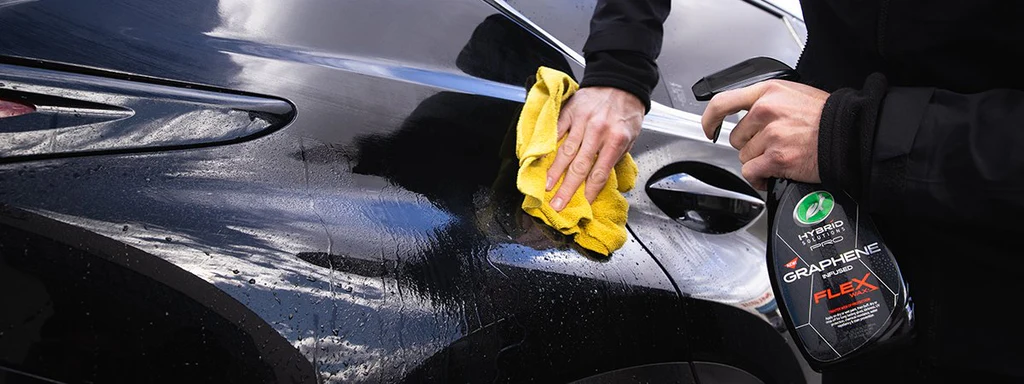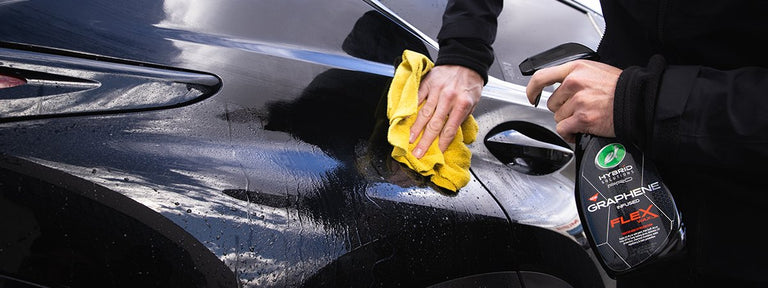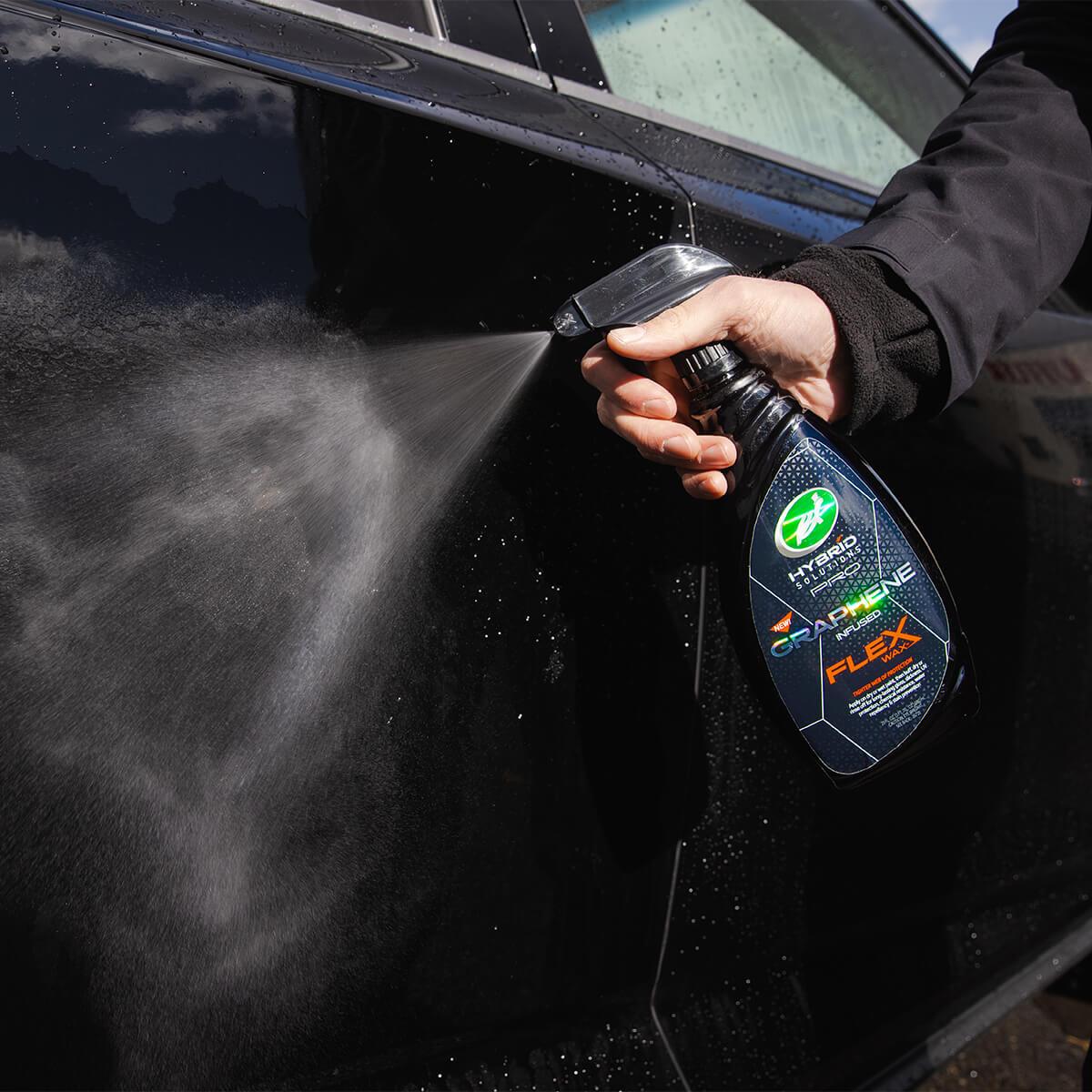The best paint protection for cars is a ceramic coating. It offers long-lasting durability and superior protection.
Car enthusiasts constantly seek ways to preserve their vehicle’s pristine appearance. Paint protection options like waxes, sealants, and ceramic coatings provide varying levels of defense against environmental factors. Among these, ceramic coatings stand out due to their longevity and effectiveness.
They form a strong, hydrophobic layer that repels water and dirt, making maintenance easier. This coating also protects against UV rays, oxidation, and minor scratches. While ceramic coatings can be more expensive initially, their long-term benefits often justify the cost. Investing in ceramic coatings ensures that your car’s paint remains glossy and protected for years.

Credit: www.turtlewax.com
Introduction To Car Paint Protection
Keeping your car’s paint in great shape is essential. It makes your car look new and maintains its value. Car paint protection helps you achieve this goal. You must know how to protect your car’s paint from damage.
Importance Of Paint Protection
Paint protection shields your car’s surface from harmful elements. Dirt, debris, and harsh weather can damage the paint. Protecting the paint helps preserve the car’s beauty and value.
UV rays can fade your car’s paint over time. A good protection layer blocks these harmful rays. It keeps the color vibrant and prevents cracking.
Bird droppings and tree sap can harm your car’s paint. These substances are acidic and can cause stains. Paint protection creates a barrier, making it easier to clean these messes.
Common Paint Damage
- Scratches: These can occur from keys, branches, or even washing your car.
- Stone Chips: Small rocks can hit your car while driving, causing chips.
- Oxidation: Over time, paint can oxidize, making it look dull.
- Swirl Marks: Improper cleaning techniques often cause these fine scratches.
Protecting your car’s paint helps avoid these common damages. Regular maintenance and proper protection ensure your car always looks its best.
Types Of Paint Protection
Protecting your car’s paint is essential. It keeps your vehicle looking new. There are several types of paint protection. Each has its unique benefits. Below are the most popular types:
Wax
Wax is a traditional method of paint protection. It creates a shiny layer on the car’s surface. Wax is easy to apply and affordable. Natural wax and synthetic wax are the two main types.
- Natural wax comes from carnauba plants.
- Synthetic wax is made from chemicals.
Wax offers a temporary shield. It needs reapplication every few months.
Sealants
Sealants are synthetic products that offer longer-lasting protection than wax. They create a strong bond with the paint and can last up to six months.
- Polymer sealants are the most common.
- Acrylic sealants are also available.
Sealants provide a glossy finish. They are easy to apply and remove.
Ceramic Coatings
Ceramic coatings are a modern solution. They offer durable protection for your car’s paint. Ceramic coatings form a hard layer on the surface. This layer is resistant to scratches and chemicals.
- SiO2-based coatings are popular.
- TiO2-based coatings are also used.
Ceramic coatings can last for several years. They are more expensive than wax and sealants.
Paint Protection Film
Paint Protection Film (PPF) is a clear, thick film. It is applied to the car’s surface. PPF provides the highest level of protection. It is resistant to scratches, chips, and stains.
- Thermoplastic urethane is the main material.
- PPF can be self-healing.
PPF is the most expensive option. It requires professional installation.
Wax: Pros And Cons
Choosing the best paint protection for your car is crucial. Wax is one of the options many car enthusiasts consider. This section delves into the pros and cons of using wax for car paint protection. Understand the benefits and limitations to make an informed decision.
Benefits Of Wax
Wax provides a glossy finish that enhances the car’s appearance. The shine makes the car look new and well-maintained. Wax also adds a layer of protection against UV rays. This helps prevent the paint from fading.
Another benefit is that wax can repel water. Water forms beads on the surface and rolls off easily. This makes it harder for dirt and grime to stick to the car. Wax is also easy to apply and does not require professional help. You can do it at home with minimal tools.
- A glossy finish enhances car’s appearance
- UV protection prevents paint fading
- Water repellent keeps the car cleaner
- Easy application without professional help
Limitations Of Wax
Despite its benefits, wax has some drawbacks. One major limitation is its short lifespan. Wax needs to be reapplied every few months for continuous protection. This can be time-consuming and labor-intensive.
Wax does not provide strong protection against scratches and chips. It is not as durable as ceramic coatings or paint sealants. Another limitation is that wax can melt in high temperatures. This reduces its effectiveness during hot weather.
- Short lifespan requiring frequent reapplication
- Limited protection against scratches and chips
- Melts in high temperatures, reducing effectiveness
Sealants: Pros And Cons
Sealants are popular for protecting car paint. They offer great benefits but also have some drawbacks. Understanding these can help you make an informed decision.
Advantages Of Sealants
Sealants provide a durable layer of protection. This layer safeguards your car against various elements.
- Long-lasting protection: Sealants last longer than waxes. They can protect your car for up to a year.
- Easy application: Applying sealants is simple. You can do it yourself without professional help.
- Shiny finish: Sealants give your car a glossy look. Your car will look new and clean.
- Resistant to harsh weather: Sealants protect against rain, snow, and UV rays.
Drawbacks Of Sealants
Despite their benefits, sealants have some downsides. It’s important to be aware of these.
- Less warmth: Sealants may lack the warm glow of carnauba wax.
- Requires prep work: The car surface must be clean. Any dirt can affect the sealant’s effectiveness.
- Not scratch-proof: Sealants protect against many things, but not scratches.
- Cost: Sealants can be more expensive than traditional waxes.
Ceramic Coatings: Pros And Cons
Ceramic coatings are a popular choice for car enthusiasts. They offer excellent protection and a glossy finish. But what are their strengths and weaknesses? This section explores the pros and cons of using ceramic coatings for your car.
Strengths Of Ceramic Coatings
Ceramic coatings provide a durable layer of protection. They shield your car’s paint from UV rays, water spots, and dirt. Here are some key strengths:
- Long-lasting Protection: Ceramic coatings last for years, unlike waxes.
- Hydrophobic Properties: Water beads off the surface easily.
- UV Resistance: Prevents paint from fading.
- Glossy Finish: Provides a deep, shiny look.
- Ease of Cleaning: Dirt and grime wipe off effortlessly.
Weaknesses Of Ceramic Coatings
While ceramic coatings have many advantages, they also have some downsides. It’s important to know these weaknesses before deciding.
- High Cost: Ceramic coatings can be expensive.
- Professional Application: Needs expert installation for best results.
- Time-Consuming: The application process can take several hours.
- Not Scratch-Proof: They resist scratches but are not scratch-proof.
- Maintenance: Requires specific maintenance products.
Understanding the strengths and weaknesses of ceramic coatings helps in making an informed decision. Choose the best protection for your car’s paint.
Paint Protection Film: Pros And Cons
Paint Protection Film (PPF) is a popular choice among car owners. It offers a layer of protection for your vehicle’s exterior. Understanding the pros and cons of PPF helps in making an informed decision.
Advantages Of Paint Protection Film
PPF provides several benefits that make it an attractive option for car protection.
- Durability: PPF is highly durable and can last for years.
- Scratch Resistance: It protects your car from minor scratches and chips.
- UV Protection: PPF blocks harmful UV rays, preventing paint fading.
- Self-Healing: Some PPF products have self-healing properties, repairing minor damage on their own.
- Gloss Enhancement: PPF enhances the gloss and shine of your car’s paint.
Disadvantages Of Paint Protection Film
Despite its benefits, PPF has some downsides worth considering.
- Cost: High-quality PPF can be quite expensive.
- Installation: Proper installation requires professional help, adding to the cost.
- Maintenance: PPF needs regular maintenance to keep it in good condition.
- Yellowing: Over time, some PPF products may turn yellow, affecting the car’s appearance.
- Limited Lifespan: PPF does not last forever and will need replacement eventually.
Diy Vs Professional Application
Protecting your car’s paint is essential for maintaining its value and appearance. But should you apply paint protection yourself or hire a professional? Let’s explore the pros and cons of each approach.
When To Diy
DIY paint protection can be a good choice for those who enjoy working on their cars. It can save you money and allow you to apply the product at your own pace.
- Cost-effective: DIY kits are usually cheaper than professional services.
- Convenience: You can apply the protection at home.
- Learning experience: Gain knowledge about your car’s paint.
However, DIY application requires time, effort, and some level of skill. Mistakes can lead to uneven protection or damage to your car’s paint.
When To Hire A Professional
Professional application ensures a high-quality finish and long-lasting protection. Experts have the experience and tools needed for a flawless job.
- Expertise: Professionals know the best techniques and products.
- Time-saving: Save your time by letting experts handle it.
- Warranty: Many professionals offer warranties for their work.
Hiring a professional can be more expensive, but the results are often worth the investment. Your car will look better and be better protected.
| Criteria | DIY | Professional |
|---|---|---|
| Cost | Low | High |
| Convenience | High | Medium |
| Quality | Variable | High |
| Time | High | Low |
Choose the option that best fits your needs and preferences. Both DIY and professional applications have their benefits and drawbacks.

Credit: collisionprosinc.com
Maintenance Tips For Longevity
Keeping your car’s paint protection in top shape requires regular care. Proper maintenance ensures the protective layer lasts longer. Follow these simple tips to keep your car looking shiny and new.
Regular Cleaning
Regularly clean your car to remove dirt and grime. Use a soft sponge and mild car wash soap. Rinse thoroughly with water to avoid residue. Dry with a microfiber towel to prevent water spots.
Avoid automatic car washes with harsh brushes. Hand washing is gentler and more effective. Clean your car at least once a week for best results.
Avoiding Harsh Chemicals
Avoid using harsh chemicals on your car’s paint. These can damage the protective layer. Use products designed specifically for cars. Check labels for safe ingredients.
Consider using pH-balanced cleaners. These are gentle on the paint and effective. Avoid household cleaners like bleach or ammonia.
Routine Inspections
Inspect your car’s paint protection regularly. Look for signs of wear or damage. Small chips or scratches can worsen over time.
Address any issues promptly to maintain the protection. Use touch-up kits for minor repairs. Schedule professional inspections annually for comprehensive care.
Choosing The Right Protection For Your Car
Choosing the right paint protection for your car is crucial. It helps maintain the car’s shine and value. There are many options available. Understanding your needs can help you make the best choice.
Factors To Consider
Several factors affect the type of paint protection you should choose. Here are some key points:
- Climate: Different protections work better in varying climates.
- Usage: How often you use your car matters.
- Maintenance: Some protections need regular upkeep.
- Durability: Some options last longer than others.
Budget And Lifestyle
Your budget and lifestyle play a significant role. Here’s a simple table to guide you:
| Type of Protection | Cost | Best for |
|---|---|---|
| Wax | Low | Occasional drivers |
| Ceramic Coating | High | Frequent drivers |
| Paint Protection Film | Very High | Luxury car owners |
Consider how much you drive and your budget. Wax is cheaper but needs frequent application. Ceramic coating costs more but lasts longer. Paint protection film is the most expensive but offers the best protection.

Credit: www.turtlewax.com
Frequently Asked Questions
What is the Best Paint Protection for Cars?
Ceramic coating is often considered the best paint protection due to its durability and long-lasting shine.
How Long Does Ceramic Coating Last?
Ceramic coating can last up to five years with proper maintenance, offering excellent protection against environmental damage.
Can I Apply Paint Protection Myself?
Yes, DIY paint protection kits are available, but professional application ensures better coverage and durability.
Does Paint Protection Prevent Scratches?
Paint protection helps reduce minor scratches and swirl marks, but it won’t make your car completely scratch-proof.
Is Paint Protection Worth The Investment?
Yes, paint protection can preserve your car’s appearance, enhance resale value, and reduce maintenance costs over time.
How Do I Maintain Paint Protection?
Regular washing with pH-neutral soap and avoiding abrasive materials will help maintain the effectiveness of paint protection.
Conclusion
Choosing the best paint protection for your car ensures long-lasting beauty and value. Options like ceramic coatings, paint protection films, and sealants offer excellent defense. Proper maintenance and regular application are key. Invest in quality protection today to keep your car looking pristine and shielded from environmental damage.













Leave a Reply